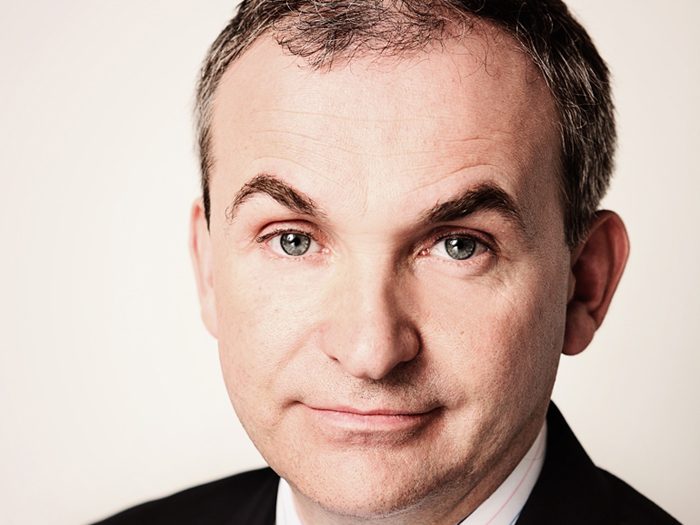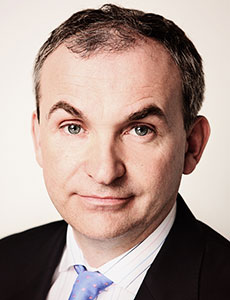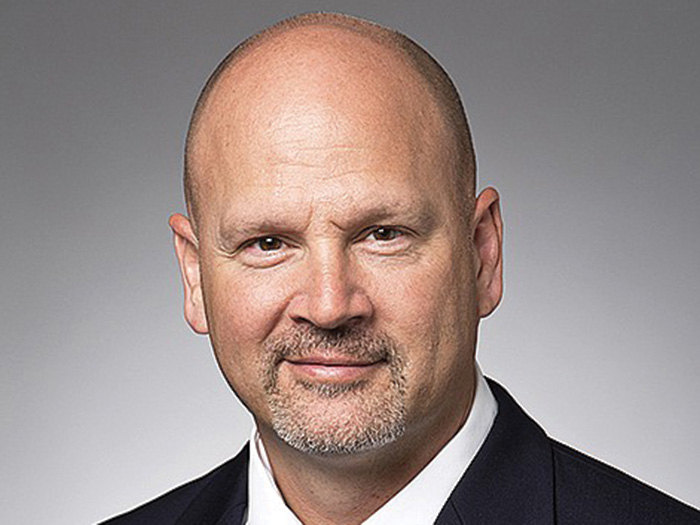Executive Spotlight
8 Questions for Richard Northcott

Ironshore Director of Fine Art & Specie Richard Northcott took an indirect path to insurance, as many in the field do. But in the process, he found his niche and built decades worth of knowledge in the world of fine art.
In this Q&A, Northcott describes the evolution of his experience in the high-stakes world of fine art and delves into emerging risks facing museums and other art professionals.
R&I: How did you get into the world of fine art?
Richard Northcott: I found myself like so many people in our industry falling into insurance. I actually graduated back in 1989 with a degree in agriculture. But three years of studying agriculture at university taught me that in the UK, unless you own your own farm, it’s hard to build a successful career. So I started looking for graduate jobs.
There was an advert in the Times newspaper in London for a graduate trainee at a small Lloyds broker. They only employed about 30 people. I turned up for the interview. I spent 40 minutes talking to one of the company directors about cars because he’d just bought a new car and cars were my hobby. When I got home after the interview and told my mother, she said “Richard, how could you?”
But something must have gone right because they called at 9 a.m. the next morning and said, “When can you start?” I walked into a broker not even knowing that they did fine art insurance.
R&I: How steep was the learning curve?
RN: In those days they would start you off with the most basic tasks. I spent 3 days in the post room, 4 months doing processing, and then moved to the claims department for about a year. Then finally they promoted me into the placing department as a fine art broker, and that’s where I really started learning their trade.
I walked into a broker not even knowing that they did fine art insurance.
The company was sold and I ended up running a department called the Specialties Division in the larger group which was a multi-specialty unit, but fine art was always at its core. I’ve grown up in the broking community. I’d been a broker for 22 years.
R&I: How did you move from brokering to underwriting?
RN: In 2011, I was approached by an underwriter that I did a lot of business with, who shared with me that he was leaving his company and had offered to help his employer find a replacement. He asked if I was interested, and I jumped at it.
One of the first things I did when I became an underwriter was to go through the portfolio of business that I inherited and make some quite severe changes. We got rid of about $10 million of premium in a year, business that wasn’t in my appetite, in my experience or simply was not profitable. Then we set about rebuilding the portfolio of business in the shape that I wanted.
Today we have a book of business that’s 65 percent fine art, about 25 percent general specie, about 5 percent classic cars and motor sport, about 3 percent cash in transit and about 2 percent jewelry.
R&I: What’s your favorite aspect of underwriting fine art insurance?
RN: The most enjoyable part of my job as a broker was going out and meeting clients, and I really wanted to maintain that client contact as an underwriter. I spend a fairly substantial part of my time out on the road meeting with customers, going to see some of these wonderful art collections and museums around the world and talking to the registrars, and the curators, and the risk managers of these institutions about what their issues and concerns are.
R&I: What are the top issues museum risk managers are facing?
RN: Art is becoming more valuable. A Picasso or Monet can sell for as much as $250 million at auction. Whole collections can be worth billions. Last year, for example, I saw a Francis Bacon show that was valued at around $2 billion.
Increasing values also increase exposure. Museums commonly organize exhibitions and art shows. Every time you are moving, storing and displaying art, the risk of damage or deterioration increases, and sometimes the financial loss potential is very significant.
Art is becoming more valuable. A Picasso or Monet can sell for as much as $250 million at auction. Whole collections can be worth billions. Last year, for example, I saw a Francis Bacon show that was valued at around $2 billion.
We’re seeing clients and their attorneys take note of that. They are getting involved in the drafting of loan agreements, which have become increasingly complex as drafters seek to shift the lion’s share of liability onto borrowers.
R&I: How exactly are loan agreements changing?
RN: A decade ago, loan agreements were pretty standard. Most included a clause requiring the borrower to carry a boiler-plate fine art insurance policy. Those policies typically exclude coverages for acts of war or terrorism, confiscation, general wear and tear and deterioration. Now lenders sometimes want borrowers to carry those coverages. Some lenders of contemporary art also ask for cyber coverage, since modern artists increasingly experiment with digital medium, which could expose them to a systems breach amongst other risks.
The biggest and most concerning change, however, is that lenders are increasingly asking for borrowers to accept ‘absolute liability’ in contracts.
R&I: What is absolute liability?
RN: By asking borrowers to accept absolute liability, they hold them responsible for anything that happens to a piece of art while it is in the borrower’s care, including while it’s in transport and on display.
That could encompass a wide range of circumstances and scenarios. Borrowers could even be on the hook for a loss of market value that occurs while they are responsible for the art. They could be liable for any natural deterioration that occurs. They might end up having to pay for things totally outside of their control if they accept absolute liability in a loan agreement.
There is no technical legal or insurance definition of absolute liability, so it could all come down to what a lawyer can argue in court.
R&I: How can museums protect themselves?
RN: Museums could have many millions of dollars at risk if they put on a high-profile show, and most won’t have the financial capacity to take that on. Before signing any loan agreement, they should contact their brokers and insurers to verify their coverage and limits and identify any gaps between the liability they are being asked to accept, what insurance coverage they have in place and what amount of financial risk they are willing to shoulder.
Because each loan agreement is different, every one deserves a careful and detailed review. I see two to three loan agreements in a week, and I’ll pick apart each one with a fine-toothed comb and compare the contract with the museum’s insurance policies. Then I’ll see if there’s any additional coverage we can provide to close the liability gap.
At Ironshore, we’re lucky to have a flat management structure, so I can easily walk down to see our terrorism or political risk underwriter to determine if there are some terms and conditions he can offer for our clients. I can quickly find out if there’s extra coverage and capacity we can offer. Most of the time, we can help museums fulfill the obligations that the lender is asking them to accept by crafting bespoke solutions.
*Please visit www.ironshore.com for all disclaimers.











